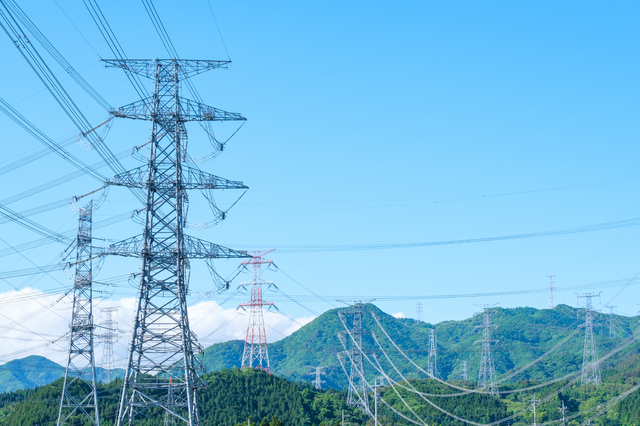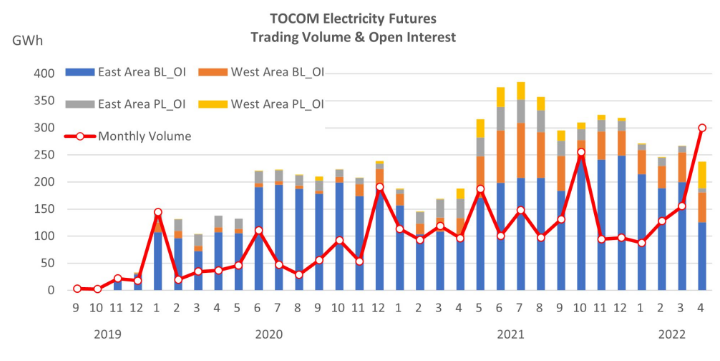TOCOM Energy
JPX Energy Market Updates(Nov.14, 2022)
Welcome back to JPX energy market updates.
Oil prices corrected lower at the start of last week but rebounded on Thursday and Friday on US inflation data and news China had eased some Covid restrictions, while uncertainty over Russian supplies is also seen as lending support for oil markets.
China announced major changes to its strict Covid-19 measures for inbound travelers on Friday, reducing quarantine on arrival from seven days down to five, followed by three days of isolation at home.
A so-called "circuit breaker" mechanism on inbound flights, which was seen as the major barrier to visiting China would be abolished, bringing an end to a policy that saw the snap closures of flight routes if a certain proportion of passengers tested positive for the virus. What’s more, arriving travellers will now be allowed to enter the country after showing just one negative PCR test within the 48 hours before boarding. That means more international flights will be starting up which is inline with a sharp increase in the number of international flights of winter and spring flight schedule.
An easing of restrictions was also announced within China, with the length of time spent in central quarantine for close contacts reduced to five days instead of the previous seven. Besides, Close contacts of people who have been in contact with someone who tests positive will no longer have to undergo quarantine and medical surveillance.
In the latest developments, new covid cases continued to rise in China, the latest outbreaks were seen as curtailing oil demand in the short-term but the supply/demand balance is set to tighten once China bounces back. Most analyst maintains its view that China could reopen in the second quarter of 2023 when all the necessary medical preparations are done.
Take another look at Asian giant consumer India’s situation, the latest data from India’s Petroleum Planning & Analysis Cell shows that domestic oil products demand grew by 3.4% YoY to total 18.37mt in October, the highest monthly number since June. Gasoline consumption grew by 8.8% YoY to 2.99mt, whilst diesel consumption increased by 5.5% YoY to 6.98mt. Cumulative products demand in the current fiscal year (starting April) stands at 126.12mt, up 11.8% YoY. So far, India’s economy has been largely impervious to global economic headwinds.
Middle East benchmark Dubai crude eased slightly over the week, despite having rebounded strongly on Friday to claw back most of the week's earlier losses. However, the strong rebound in flat prices only slightly lifted the Dubai market structure, while premiums were edging up despite spot demand still being seen as sluggish. The prompt M1/M3 spread nudged up to $3.66/b on Friday, while JPX Dubai curve settled at $3.32/b.
On the supply side, traders were looking for developments in the Russian price cap, which could curtail exports in the new year, with Moscow reiterating it would not supply countries operating within the cap.
China and India remain the main destination for Russian crudes in the wake of the Ukraine war, accounting for 58% of all seaborne Russian crude exports in October according to S&P Global tracking data. China remained the primary destination for Russian barrels in October despite shipments falling to average 904,000 b/d from 918,000 b/d in September. Shipments to India rose to a record high in October as its refiners continue to snap up discounted barrels of Russia's Urals and ESPO crude streams.
But the availability of an unregulated tanker fleet to redirect flows and local refining slate constraints are limiting factors. Most market analyst expect Russian production shut-in as a result of the new export hurdles to peak at around 1.5 million b/d in the first quarter of 2023 but would ease as more sanction workarounds are found. This is likely to contribute to a fall in global oil inventories during the first quarter of 2023.
The Brent/Dubai cash spread soared to a five-month high amid fears over a European supply crunch. The relative fall in Dubai values comes despite the headline OPEC+ production cut of 2 million bpd, of which the Middle East will make almost all of the actual 1 million bpd cuts for November and beyond.
As refineries return from maintenance season, crude qualities will be increasingly important with medium crudes, which tend to have the highest middle distillate cut, benefiting the most from firm middle distillate cracks. If there is an increase in economic activities that require the consumption of more middle distillate oil products, then it is expected that the demand for Dubai will go up, leading to a shift in the Brent–Dubai spread and vice versa.
In the medium term, mounting economic headwinds for the global economy will erode oil demand growth next year, as the EIA sees global oil demand growth in 2023 some 320,000 bpd lower than previously expected.
As for the calendar this week. OPEC will release its latest monthly market report later today, this will be followed by the IEA monthly oil market report on Tuesday.






